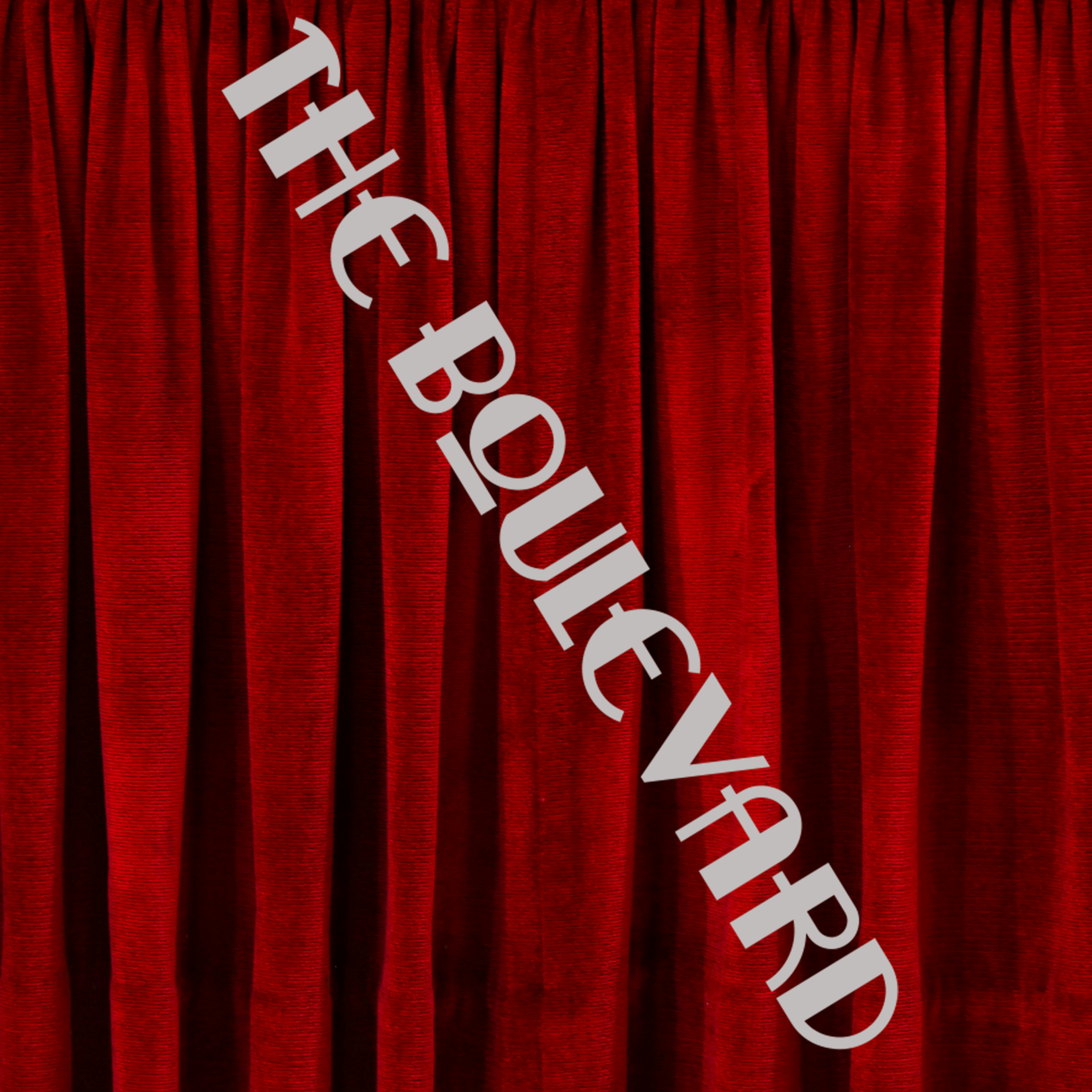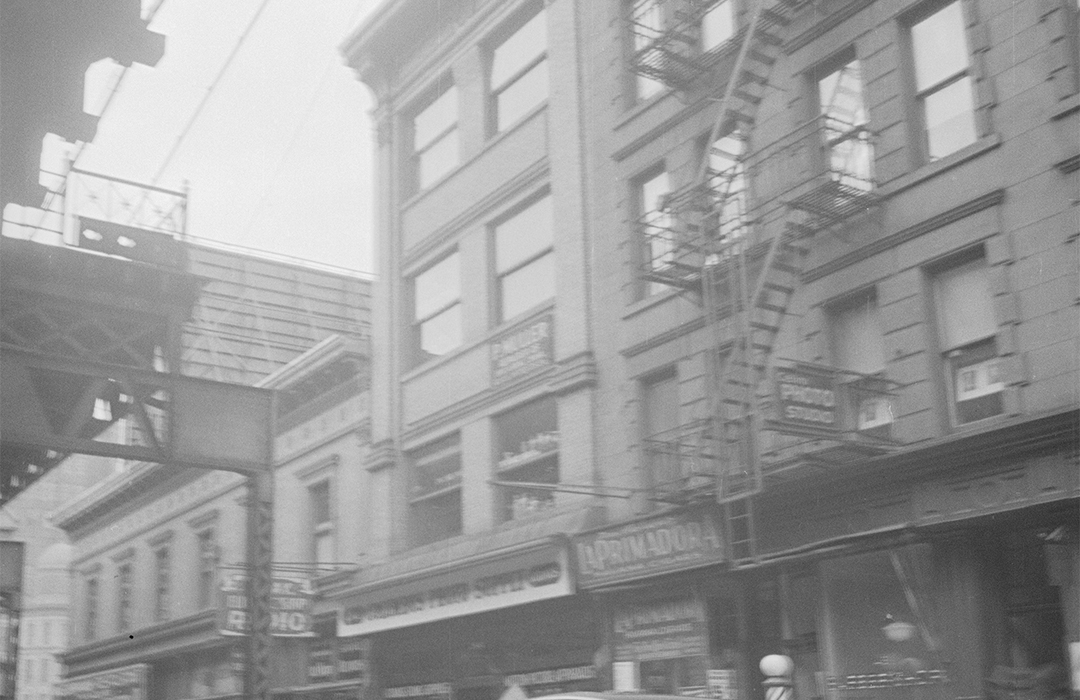
Lincoln Square Building, 1966-1968 Broadway aka 146 Columbus Avenue
by Tom Miller
In November 1905, Morris Weinstein leased the property at 1966 and 1968 Broadway from Louis I. de Milhau “for a long term of years,” according to The Evening Post. (The property had been in the de Milhau family since 1869.) The article noted that the plot ran through the block and to 146 Columbus Avenue and added, “Mr. Weinstein will erect a building on the plot.” The five-story “store and office building,” known as the Lincoln Square Building, would be designed by Louis C. Mauer.
Faced in brownstone, Maurer’s design married the Renaissance Revival and Romanesque Revival styles. The windows of the upper floors were grouped in pairs by shared sills and lintels and framed by stone quoins. The top floor openings were fully arched. An advertisement for the Lincoln Square Building called it a “High-class office and studio building.”
The initial tenants were mostly from the construction and automobile industries. In 1908, they included the Multiple Spark Plug Co. and the S.P.O. Automobile Co. The latter occupied the ground floor of 1966-1968 Broadway. An advertisement in The New York Times on October 18, 1908, said in part, “The S.P.O. is a French car of the first rank. Since its recent introduction in America, it has won great favor because of its superior workmanship, its great beauty, simplicity and strength and its moderate price.” “Moderate price” was a subjective term. An S.P.O. 4-cylinder town car was advertised at $2,590—just over $100,000 in 2024.
S.P.O. Automobile Co. was supplanted in the showroom in the spring of 1909 by the Knox Automobile Co., which had previously been on Broadway near 48th Street. Headquartered in Springfield, Massachusetts, its automobiles were advertised as “the car that satisfies.”
“The S.P.O. is a French car of the first rank…”
In the meantime, offices in the upper floors were occupied by architect Otto H. Taub, the Utility Mfg. Co., the contracting firm of Cosgrove-Daily Co., the Consolidated Roofing Co., and The Raisler Heating Co. The ground floor of 146 Columbus was home to Achille F. Biavati’s restaurant. Space on an upper floor of the Columbus Avenue building was leased in 1913 to the Alert Pool & Billiard Co.
The Union Sales Company occupied offices in 1966 Broadway in 1915. The possibly shady business advertised in Spanish in the Tampa, Florida El Internacional, urging immigrants to send in for a free catalog. Saying, “This great catalog has brought happiness to ten thousand homes,” it went on for paragraphs without ever saying exactly what the catalog or the company offered. Operating from Room 36 of 1966 Broadway at the same time was Wonderscope Co. It, too, advertised in Spanish language newspapers, like the San Antonia La Prensa. An advertisement in that newspaper on July 7, 1915, offered, “FREE: A wonderful miracle with 12 scenes from the European war.” The “miracle” was a stereoscope viewer; however, it was not truly free. Near the end, the ad read in part, “Send us the $2.40 American gold that you will obtain quickly and easily from your friends and neighbors, and with return mail and postage fee you will receive a legitimate mirascope with the slides.” The Ideal Masseur Co. had offices in 1968 Broadway in 1916. The firm manufactured and sold eyeball massaging equipment. An advertisement in The Presbyterian of the South in March of that year promised, “If your eyes are not normal, there is a perfectly safe and natural way of restoring perfect circulation of blood, which is all that weak eyes require.” More mainstream tenants were the real estate office of John J. Meenan and the Canavan Contracting Co.
Automotive firms continued to lease space. In 1915, the Lee Tire Sales Co., Inc. moved into 1966, and the following year, the used car showroom of Kaufmann-Morris Company occupied the ground floor. Its new car showroom was slightly south at 1800 Broadway. With World War I raging in Europe in 1917, Kaufmann-Morris Company promised that for every Premier motorcar that was sold during the week of June 25, a $100 check would be sent to the American Red Cross. Kaufmann-Morris Company was the last of the automobile showrooms. The ground floor was leased by Frank E. Campbell in 1917 for his floral shop called Roseland. The florist would remain for years. As Valentine’s Day approached in 1920, an ad boasted that the new carnation Loverslure was available here, but cautioned young men that the stock was limited. “You had better get ‘Loverslure’ before St. Valentine’s Day. The blooms are rare and the lovers are many.” In 1919 the Wridgway Company, Inc. leased space in 1966 Broadway. The firm manufactured and sold the Zephyr Pistons. The firm boasted that during the war, “exhaustive tests were made by the Rolls-Royce Co…which resulted in the installation of Zephyr Pistons in their motors as standard equipment.” In the post-World War I years additional real estate firms moved in. The Metropolitan Room Exchange (which found rented rooms for clients) was in 1966 Broadway in 1922. Real estate agent James P. Walden’s offices were here at the same time. He described himself as a “specialist in West Side Dwellings.”
“You had better get ‘Loverslure’ before St. Valentine’s Day. The blooms are rare and the lovers are many.”
The American Detective System moved into 1968 Broadway in 1919. An ad in the Lincoln, Nebraska The Commoner on October 1, 1922, read, “Detectives earn big money. Excellent opportunity. Travel Fascinating work. Experience unnecessary. Particulars free. Write American Detective System, 1968 Broadway, New York.” The firm was here through 1924, after which the Haights Detective Agency was listed here.
A variety of tenants came and went over the subsequent decades. In 1941 The Emstire Co. operated from 1966 Broadway. The firm sold a hand-held “Therapeutic Massager” which it called “the first heating unit ever made which enables you to massage the painful area at the same time that invigorating heat is applied.”
In the mid-1950s, Adam Industries was headquartered at 1966 Broadway. It advertised for salesman/representatives in December 1956, saying in part, “Own your own business. Take over a route of self-service racks displaying fun games, toys and magical articles. These items sell on sight…To qualify must have car and a minimum of $650 cash.”
Louis C. Mauer’s 1906 structure survived until 1992. It was razed with the rest of the block to make way for the One Lincoln Square Condominium building.
Tom Miller is a social historian and blogger at daytoninmanhattan.blogspot.com
BUILDING DATABASE
Keep Exploring
Be a part of history!
Think Local First to support the business at 1966-1968 Broadway aka 146 Columbus Avenue:


